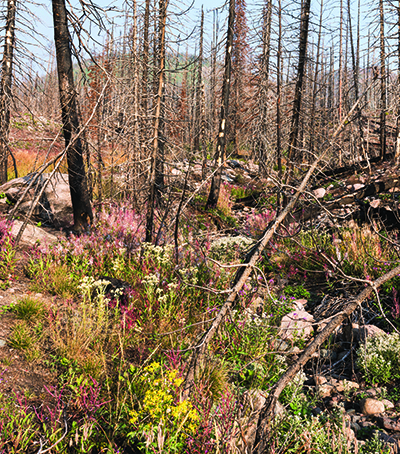
Assessing post-fire land management practices to improve recovery of soil health, vegetation and ecosystem services.
With the dramatic increase in wildfire activity in the western United States, post-fire land management has also increased to recoup economic value from burned forests, improve forest safety and expedite recovery and restoration of soil health, vegetation and forest and aquatic ecosystem functions.
However, limited research on post-fire land management strategies — like emergency stabilization, salvage logging or herbicide application — has led to uncertainty about the effectiveness of available management practices, particularly in relation to soil and water.
Professor Kevin Bladon is leading research to quantify the effects of wildfire and post-fire land management practices on soil physical properties, biogeochemical processes and vegetation recovery. He and his team hope to facilitate improved policy and management decisions that will reduce soil erodibility, improve soil nutrient availability and encourage vegetation regeneration in areas impacted by wildfires.
“Our research is occurring on the west side of the Oregon Cascade Mountains in collaboration with a range of landowners who have each approached post-fire land management differently,” Bladon said. “Our preliminary data has led to unexpected and conflicting results,” he added, “which indicates the need for additional research to inform the development of better decision support tools for land managers.”
A version of this story appeared in the 2021-2022 College of Forestry Biennial Report.

